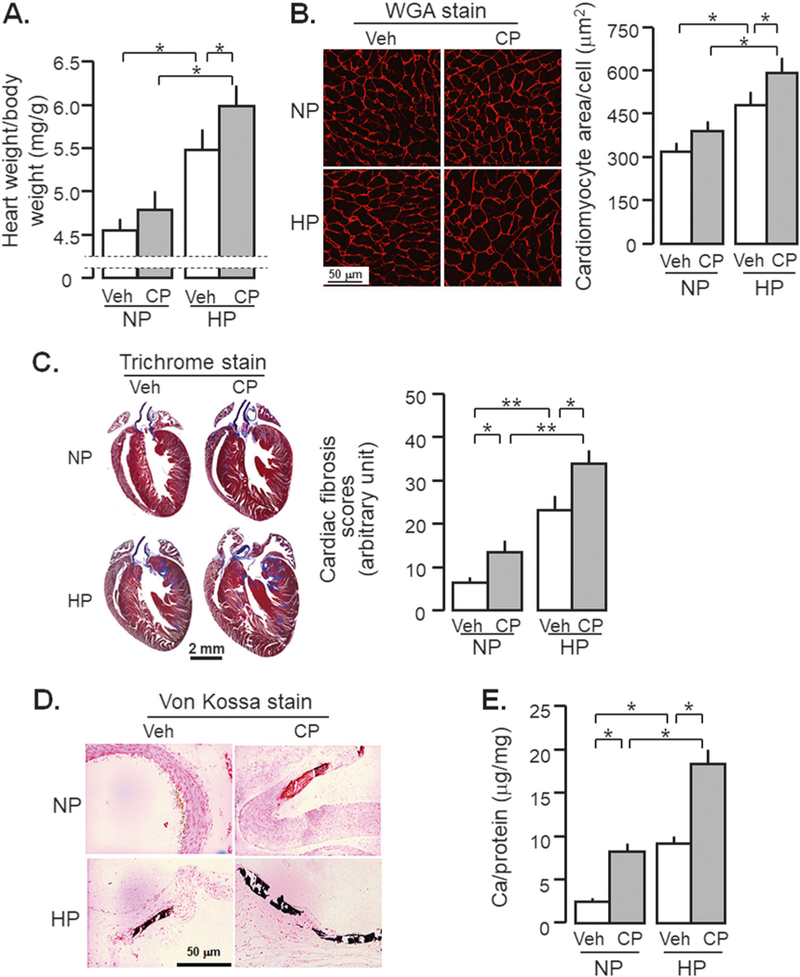Fig. 5.

High phosphate (Pi) diet promotes cardiovascular disease in CKD mice. WT mice at 3 months old were injected with CP (10 mg/Kg) or normal saline as vehicle (veh) followed by normal (NP) or high phosphate diet (HP, 2.0% Pi) for 18 weeks starting 2 weeks after CP injection. At 20 weeks after the injection, mice were sacrificed and the hearts and aorta were collected for morphology and molecular studies. a Heart weight/body weight. b Wheat germ agglutinin (WGA) stain: Left panel: representative microscopic images with WGA in heart section, scale bar = 50 μm. Right panel: sizes of cardiomyocytes were obtained from WGA-stained section with Image J program. c Cardiac fibrosis. Left panel: representative Trichrome staining in a heart sections, scale bar = 2 mm. Right panel: cardiac fibrosis score. d Von Kossa stain: there were 0/10 positive stain in Veh-NP, 2/6 positive stain in CP-NP, 2/10 positive stain in Veh-HP, and 5/8 positive stain in CP-HP group. Representative micrographs of positive stain in the aortic roots. Scale bar = 50 μm. e Calcium content in the thoracic aorta with o-cresolphthalein complexone (OCPC) assay. Data are expressed as means ± SD from each group and statistical significance was evaluated by one-way ANOVA followed by Student–Newman–Keuls post hoc test, and significance was accepted when *P < 0.05; **P < 0.01 between two groups
